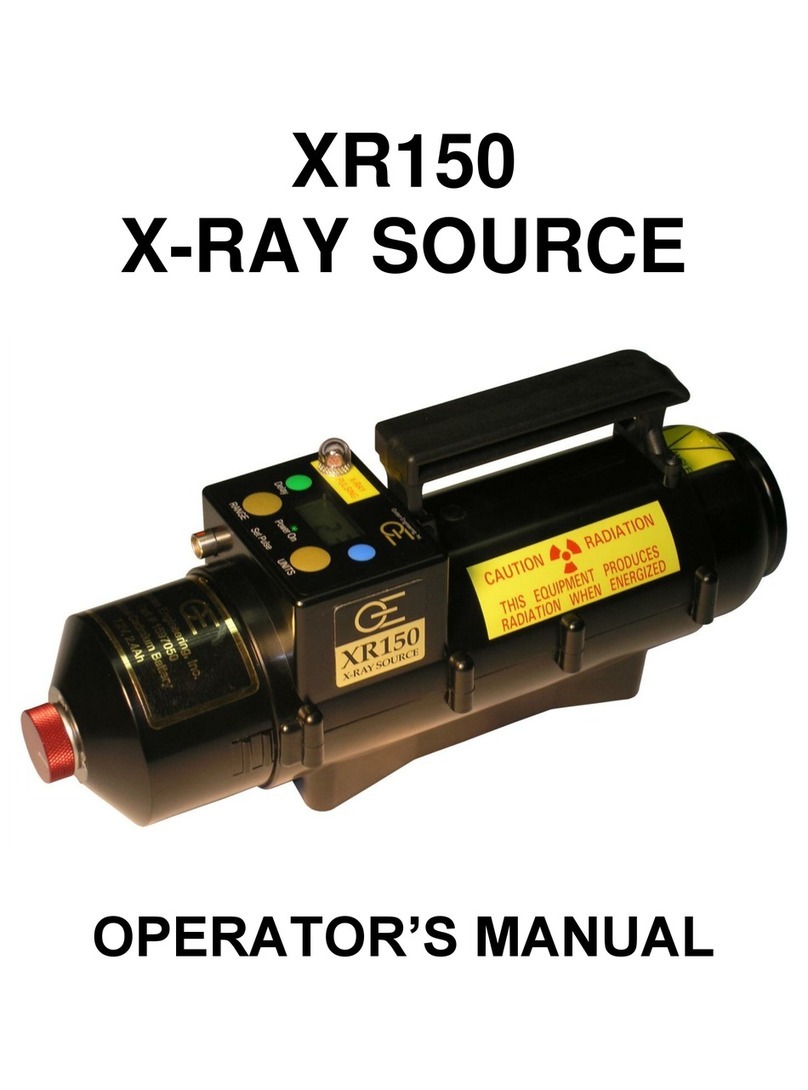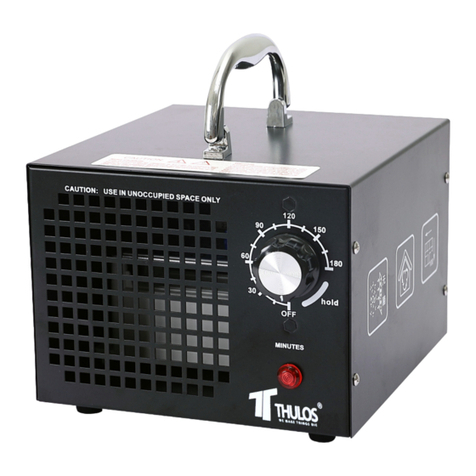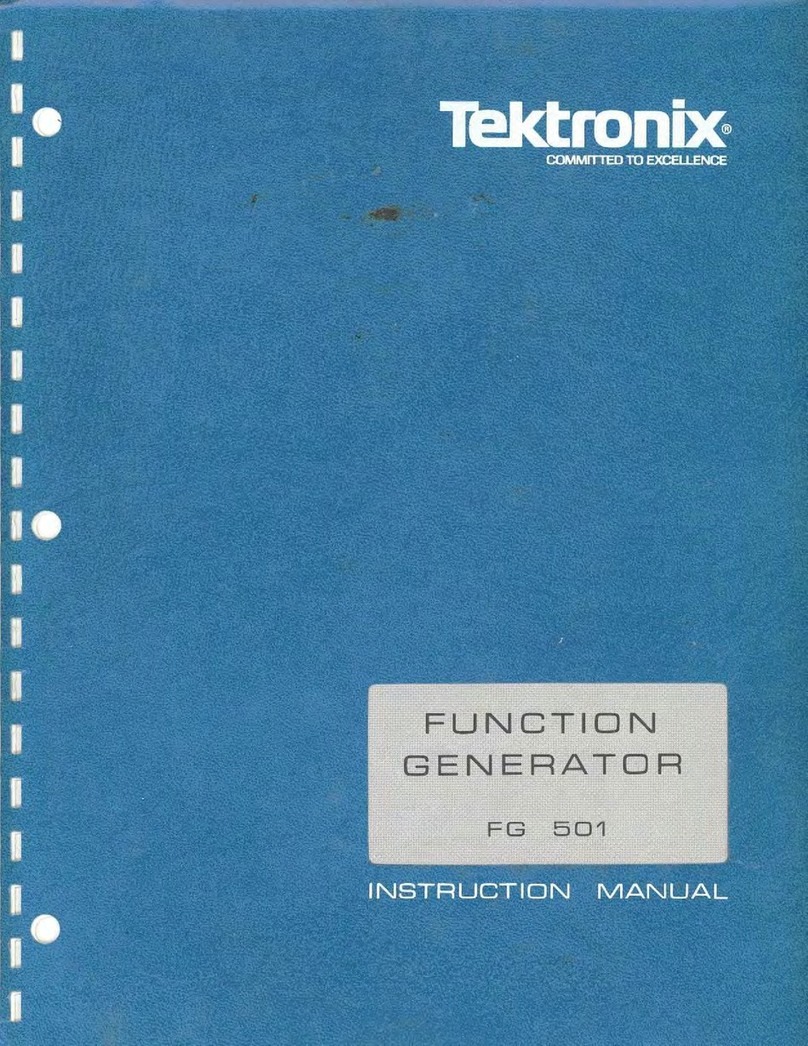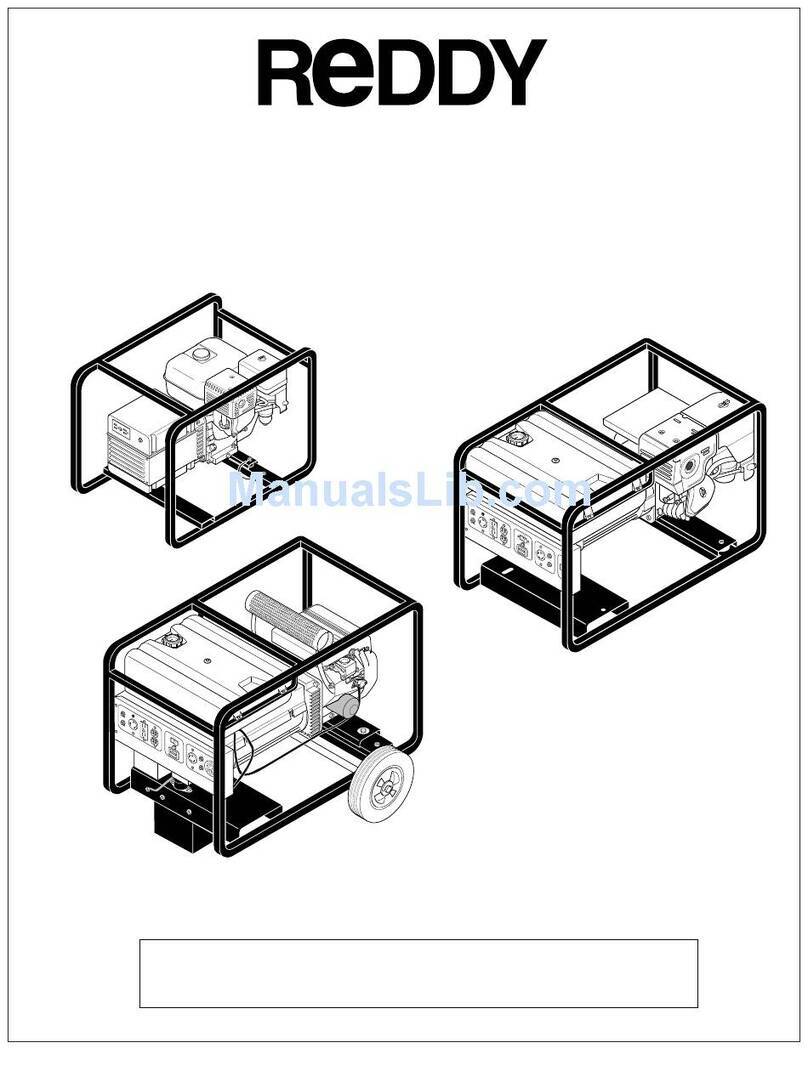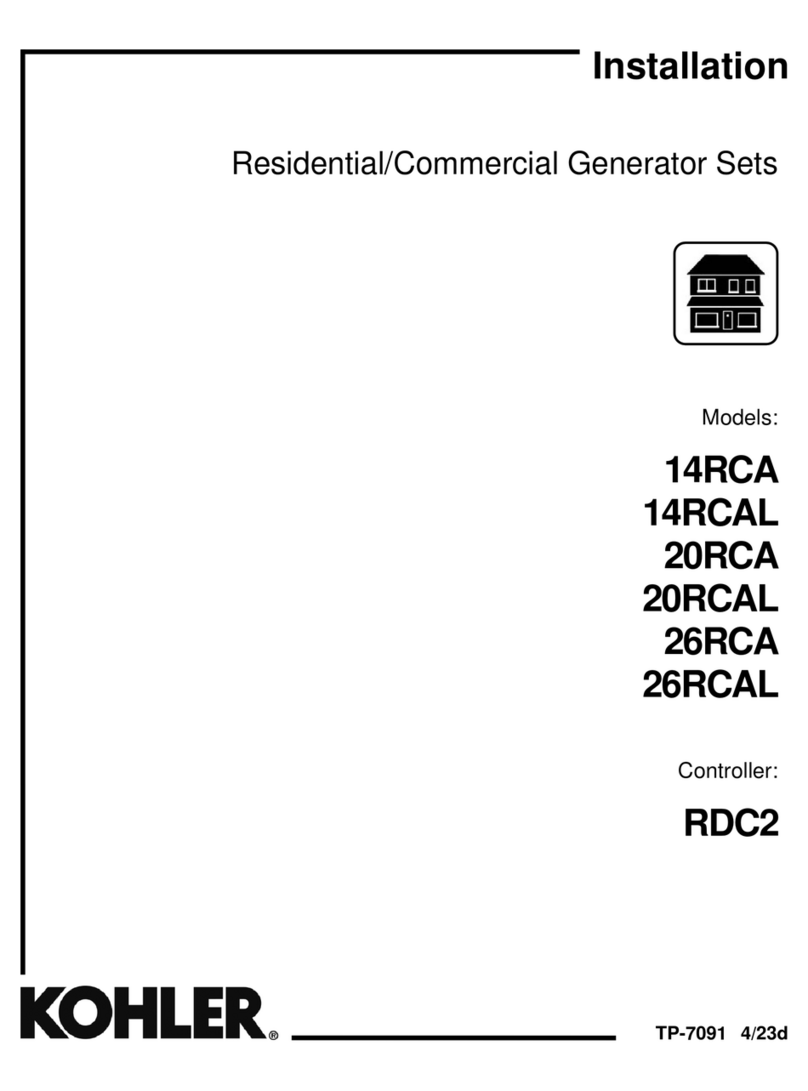Golden engineering XRS-3 User manual

OPERATOR'S MANUAL
MARCH
201
8
-Golden Engineering
�-Portable X-ray Technology

1
PAGE
1.0 INTRODUCTION 2
2.0 WARNINGS 2
DUTY CYCLE 2
STORAGE 2
3.0 PHYSICAL DESCRIPTION 3
HIGH VOLTAGE PULSER/TUBEHEAD 3
BASE 3
BATTERY PACK 3
BATTERY CHARGER 3
3.5 CONTROL MODULE 4
CABLE CONNECTOR DIAGRAM 5
4.0 DESCRIPTION OF OPERATION 6
BLOCK DIAGRAM 6
5.0 OPERATING INSTRUCTIONS 7
OPERATING PRECAUTIONS 8
EXCLUSION ZONE 8
PULSE SETTINGS 8
6.0 NAVIGATING THE MENU 9
7.0 MAINTENANCE 11
DOSE MEASUREMENT 11
TUBE REPLACEMENT 11
8.0 TROUBLE-SHOOTING 11
9.0 INSTRUCTIONS FOR SERVICE 12
REMOVING BOARDS 12
BOARD INSTALLATION 12
HEAD REPLACEMENT 12
BATTERY DISPOSAL 13
10.0 WARRANTY 13
INSTRUCTIONS TO RETURN FOR SERVICE AND MAINTENANCE 13
11.0 SPECIFICATIONS 14
PHYSICAL DIMENSIONS 14
X-RAY OUTPUT 14
ELECTRICAL & THERMAL CHARACTERISTICS 14
12.0 SPARE PARTS 14
TABLE OF CONTENTS

2
1.0 INTRODUCTION
The XRS3 is a small, lightweight X-ray generator that operates on its own removable battery pack. The XRS3 is a
pulsed X-ray device that produces X-ray pulses of very short duration (25 nanoseconds). It produces a relatively
low dose rate comparable to a 0.25 ma constant potential machine. The energy produced by the XRS3 is up to
270kVp, which makes it possible to radiograph up to one (1) inch (2.54 cm) of steel.
XRS3 standard accessories are two keys, two battery packs, and one battery charger. Remote cable and carrying
case are also common accessories.
2.0 WARNINGS
The XRS3 is a pulsed X-ray generator that emits hazardous ionizing radiation when pulsing. The XRS3 should only
be operated by authorized personnel who are properly trained to safely operate the generator. The XRS3 must
be registered with proper authorities prior to use and should not be used to intentionally expose humans.
Develop and closely follow a safe operating system for using the XRS3. The safe operating system must ensure that
no one is exposed to radiation above the permissible limits which are 2 mR (0.02 mSv) per hour for a member of
the public. The safe operating system must ensure the XRS3 is used within federal and state guidelines.
All operators and users of the XRS3 X-ray machine must wear a personal radiation monitoring device, such as
a TLD (thermoluminescent dosimeter), lm badge, and/or a pocket dosimeter consistent with the appropriate
federal, territorial or provincial standards (note: an electronic dosimeter will not detect the XRS3 radiation pulses).
Due to the short pulse width of the XRS3, survey meters of the Geiger-Mueller and scintillator type do not accurately
detect the radiation emitted from the x-ray source.
Survey meters should be of the ionization type and should be used in the integration mode. Survey meters must not
be used in the rate mode because the XRS3 does not produce constant radiation. The XRS3 produces very high
rates of radiation for very short periods of time resulting in either unrealistically high readings or no readings for
a survey meter in rate mode.
The XRS3 has no explosion proof rating and should not be used in an explosive atmosphere. The Spark Gap
is vented to the air and could be a source of ignition.
STORAGE & USE: Store and use the XRS3 in upright position. Upside down storage or use may cause premature
failure including no output dose.
The XRS3 produces high levels of radiation and must be operated by quali ed personnel who have read the
WARNINGS and OPERATING INSTRUCTIONS sections of the manual before operating the device.
DUTY CYCLE WARNING. The XRS3 is a light duty machine that is not made to pulse continuously. The
maximum duty cycle for the XRS3 is 200 pulses every four minutes (3000 pulses per hour). Exceeding the
duty cycle will shorten the life of the tube and head. In temperatures above 90 °F (32.22 °C) or continual
use, rest 30 seconds after every 50 pulses and 4 minutes after every 200 pulses.

3
3.0 PHYSICAL DESCRIPTION
Figure 1: XRS3 X-ray Unit
HIGH VOLTAGE PULSER/TUBEHEAD. The main body of the XRS3 is the tube head
which contains the tube cavity, cold cathode type X-ray tube, spark gap, high voltage
capacitor, and transformer. The standard collimator located on the front of the head
limits the X-ray beam to 40 degrees. Special order collimators up to 85 degrees are
available.
BASE. The base of the XRS3 contains an identi cation label and a ¼-20 brass insert
compatible with standard camera tripods. The base also accommodates a quick
release external tripod mount. The identi cation label located on the bottom of the
generator lists the manufacturer’s name and address, model number, serial number,
weight, volt, amp, and production date.
BATTERY PACK. The standard battery pack
is a DeWalt® 20V 2 amp hour Li Ion battery
(DCB203).
BATTERY CHARGER: The standard battery
charger is the DeWalt® DCB107 110V charger
or DCB105 220V charger. (Note DeWalt part
numbers may change). Battery charge time is
less than one hour. See battery charger manual
for additional instructions and warnings.
PICATINNY RAIL: The XRS3 has a 21 mm picatinny rail located on each side of
the housing.
BATTERY
BEAM ANGLE
LABEL
COLLIMATOR
KEY
Figure 2: Base
TRIPOD MOUNT
TRIPOD MOUNT
RELEASE TAB
RADIATION WARNING LABEL
CONTROL MODULEHANDLE
BASE
HEAD PICATINNY RAIL

4
3.5 CONTROL MODULE
POWER ON LIGHT: Illuminates when battery voltage is applied to control module.
RED X-RAY PULSING LIGHT: Blinks after time delay button or remote cable button is pressed to warn that the
XRS3 is going to pulse. The light stays on continuously while the XRS3 is pulsing. This is a failsafe warning light. If
the light does not work the X-ray unit will not pulse. See settings menu for fail safe override in emergency situations.
LIQUID CRYSTAL DISPLAY (LCD): 80 digit LCD. Home displays number of pulses selected and delay time before
the rst pulse. Home will also indicate if multiple pulse trains have been entered. Arrows allow operator to scroll
through various menu options.
DIRECTIONAL BUTTONS: Used to maneuver through the menu.
DELAY SWITCH: Left and Right arrow buttons pressed simultaneously Initiates the delay mode.
EMERGENCY STOP/ENTER SWITCH: Stops the unit before it begins pulsing or stops the unit in the middle of a pulse
train. Also used as the enter button to select desired option.
X-RAY PULSING
LIGHTS ENTER /
EMERGENCY
STOP
KEY
POWER ON
LIGHT
LCD
MODEL
IDENTIFICATION
DIRECTIONAL BUTTONS
Figure 3: Control Module
DELAY SWITCH

5
XRS3 REAR VIEW/CABLE CONNECTOR
REMOTE CONNECTOR: LEMO EEG.0K.305.CLN
MATING CABLE PLUG: LEMO FGG.305.CYCC50Z
PIN 5
PIN 2
Remote switch inputs are activated when grounded.
3 4
5
2
1
CABLE CONNECTOR: Lemo “K” series ve pin connector located on the back of the control module beneath the
battery receives the remote cable or imaging system cable.
POSITIVE +
REMOTE CABLE
CONNECTOR
BATTERY
TERMINAL
BLOCK
TEMPERATURE
SENSOR
NEGATIVE -
PIN # DESCRIPTION
1 +5 VOLTS 100 ma MAXIMUM
2 REMOTE SWITCH
3 REMOTE SWITCH - NO DELAY
4 X-RAY ON SIGNAL
5 COMMON 0 VOLTS
REMOTE CABLE CONNECTOR

6
4.0 DESCRIPTION OF OPERATION
The block diagram below illustrates how the XRS3 functions. The following sequence of events takes place each
time the XRS3 is red:
1. User initiates operation of the machine.
2. The control section sends a signal to the converter section to begin oscillating.
3. Once oscillating, the converter section changes the 20 volts DC to 22Khz AC.
4. The transformer charges the High Voltage Capacitor to about 9000 volts.
5. The spark gap arcs after the High Voltage Capacitor reaches proper voltage.
6. The pulse detector signals the control block that the unit has pulsed.
7. As the High Voltage Switch is closed, a high voltage transient of approximately 270,000 volts and
25 nanoseconds in duration is applied across the x-ray tube generating x-rays.
The closing of the High Voltage Switch produces an audible pulsing sound. The XRS3 cannot produce x-rays
without the pulsing sound so it serves as an additional warning the XRS3 is functioning.
This unit generates X-rays through high voltage bombardment of a tungsten target. The XRS3 does not contain
radioactive materials. All the high voltage is contained within the aluminum canister and as long as the canister
is not punctured the operator is not exposed to dangerous voltages.
BLOCK DIAGRAM
PULSE DETECTOR
USER INTERFACE
X-RAY TUBE
HIGH VOLTAGE
CAPACITOR
CONVERTER
BATTERY
SPARK GAP
CONTROLLER

7
5.0 OPERATING INSTRUCTIONS
The following are basic operation instructions to take an X-ray image using the XRS3. Certain applications may
require modi cations to these basic procedures.

8
SUGGESTED PULSE SETTINGS
The chart below lists approximate pulses necessary to penetrate various materials. Settings vary greatly
depending on imaging system used. Refer to imaging system instructions for more information.
MATERIAL PULSE SETTING (24” BETWEEN X-RAY & IMAGER)
CARDBOARD / LIGHT WOOD / PLASTIC 2-5
LIGHT METAL 10
STEEL 1/4” 25
STEEL ½” 50
STEEL 1” 99
X-ray Beam
25’ (7.6 m)
25’ (7.6 m)
100’ (30m)
10’ (3m)
10’ (3m)
10’ (3m)
Figure 4: Exclusion Zone
OPERATING PRECAUTIONS: The operator should always stand at least 10 feet (3m) behind the X-ray unit and clear
all personnel at least 10 feet (3m) behind the unit or at least 100 feet (30m) from the front of the unit before pulsing.
The exclusion zone (below) should be a controlled area free of all personnel while X-ray pulses.
*XRS3 should be positioned directly in front of the object to be X-rayed and the imager placed directly behind
the object to be X-rayed. Imager should be placed as close to the object as possible. Distance between XRS3 and
imager is usually 24 to 72 inches (30 to 180 cm). During operation XR200 should be stabilized on a at surface,
a tripod, or a custom xture suitable for holding the 11 pound (5 Kg) XRS3.
24 to 72 inches (30 to 180 cm)
OBJECT IMAGERXRS3

9
The following is true when using lm or digital systems that generate a positive image. If the radiograph is too
dark, the lm is underexposed. If the radiograph is too light the lm is overexposed. Underexposure can be
corrected by increasing the number of pulses and/or decreasing the distance between the imaging medium and the
XRS3. Overexposure can be corrected by reducing the number of pulses and/or increasing the distance between
the imaging medium and XRS3.
6.0 NAVIGATING THE MENU
Underexposed
Overexposed Correct exposures (pulse setting)
Correct exposures (pulse setting)
LCD ERROR MESSAGE
Low Battery Battery voltage is too low to pulse the XRS3. Charge the battery.
PWM not running
Could occur at the start of a pulse train or during a pulse train. Power
unit off and back on. If error message continues there is a problem
with electronics.
Slow Pulsing
More than one second between pulses in a pulse train. Either low
battery, problem with transformer, or electronics. Charge battery or
replace oscillator board.
No Feedback
Current not detected. No current ow going to the head. Occurs at
the beginning of pulse train. Check 20 amp fuse on the oscillator
board. If fuse is ok problem could be in head or electronics. Replace
board or send back for repair.
Cycle Reached Displayed if duty cycle is reached (200 pulses in 4 minutes).

10
>HOME MENU PRESETS
PULSES: _ _ _ _
DELAY: _ _ _ _
HOME >MENU PRESETS
SET PULSE LIFE PC
SET DELAY RESET PC
TRAINS SETTINGS
HOME - MENU PRESETS SET PULSE COUNT
>SET PULSE LIFE PC _ _ _ PULSES
SET DELAY RESET PC
TRAINS SETTINGS BACK SAVE
HOME - MENU PRESETS SET DELAY TIME
SET PULSE LIFE PC _ _ _ SECONDS
>SET DELAY RESET PC
TRAINS SETTINGS BACK SAVE
HOME - MENU PRESETS SET PULSE TRAINS
SET PULSE LIFE PC _ _ _ PULSE TRAINS:
SET DELAY RESET PC _ _ _ SECONDS BETWEEN:
>TRAINS SETTINGS BACK SAVE
HOME - MENU PRESETS LIFETIME PULSE COUNT
SET PULSE >LIFE PC
SET DELAY RESET PC _ _ __ _ _ PULSES
TRAINS SETTINGS
HOME - MENU PRESETS RESETTABLE COUNTERS
SET PULSE LIFE PC #1: _ _ _ _ >RESET
SET DELAY >RESET PC #2: _ _ _ _ RESET
TRAINS SETTINGS BACK
HOME - MENU PRESETS SETTINGS BACKLIGHT
SET PULSE LIFE PC >BACKLIGHT FEEDBACK ON OFF
SET DELAY RESET PC X-RAY INFO
TRAINS >SETTINGS BACK
SETTINGS FEEDBACK
BACKLIGHT >FEEDBACK INDIVIDUAL PULSE
X-RAY ON / X-RAY OFF
BACK BACK
SETTINGS X-RAY INFO
BACKLIGHT FEEDBACK SOFTWARE _ _ _
>E-RAY INFO SERIAL # _ _ _ HEAD # _ _ _
BACK BACK
HOME MENU - PRESETS PRESET #1 PRESET #1
> PRESET #1 PULSES: _ _ _ _ DELAY: _ _ _ _ PULSES: _ 50 DELAY: 15
PRESET #2 TRAINS: _ _ _ _ BTWN: _ _ _ _ TRAINS: 05 BTWN: 45
PRESET #3 BACK RECALL >SAVE BACK RECALL >SAVE
HOME MENU - PRESETS PRESET #1
> PRESET #1 PULSES: _ 50 DELAY: 15
PRESET #2 TRAINS: 05 BTWN: 45
PRESET #3 BACK >RECALL SAVE
To Enter/Save Presets
1. Enter desired settings (Pulse, Delay Time, Pulse Trains) from main menu as shown above
2. Go to Preset Menu
3. Select Preset #
4. Select SAVE
To Recall Presets
1. Go to Preset Menu
2. Select Preset #
3. Select Recall

11
7.0 MAINTENANCE
X-RAY DOSE MEASUREMENT Using a dosimeter, the average X-ray dose for new tube can be established.
With the dosimeter located 1 foot from the front of the case and in line with the center of the beam angle
label, the reading for 10 pulses should be at least 20 mR to 36 mR.
The leakage sheet illustrates the X-ray dose and maximum allowable radiation leakage levels for each
X-ray unit. A completed copy of this form accompanies each X-ray.
TUBE REPLACEMENT: If you have a tube replacement kit refer to instructional disk included with the kit. If you do
not have a kit the unit must be sent back to Golden Engineering or an Authorized Distributor for tube replacement.
Tube life is approximately 100,000 pulses. Under normal conditions the tube’s output will decrease slowly with use.
If the tube is broken or the glass cracks the tube output will cease immediately.
8.0 TROUBLESHOOTING
SYMPTOM TEST ACTION
No “power on” light -Check battery voltage
-Check battery connection
- Replace or charge battery
- Make sure battery is securely
attached and battery clips are not
bent or broken.
Power on lights, X-ray pulsing light
does not illuminate, X-ray does not
pulse
- Go to settings menu
failsafe
disable
- To x light replace processor board
X-ray pulses, but no image or black
image. -Test X-ray output. -Replace the tube.
Unit stops pulsing in the middle of a
pulse train and LCD displays 00.
-Check the battery voltage.
-Check 15 amp fuse.
-Check feedback line connection.
- Charge battery if necessary.
- Replace the fuse if blown.
- Make sure the screw holding
wire to the oscillator board.
Unit makes loud popping noise while
pulsing. -Stop immediately and return
for repair.
Oil leaking from unit. Return for repair.

12
9.0 INSTRUCTIONS FOR SERVICE
INSTRUCTIONS TO REMOVE THE BOARDS AND THE HEAD.
1. Use T10 Torx driver to remove 6 screws holing control module in place.
2. Remove the control module.
3. Remove cable connecting the boards.
4. Control Module Removed
1 2 3 4
Remove keyswitch connector Remove 3 screws holding processor board to top Remove processor board.
Disconnect ribbon cable. Remove the 8 screws that hold the housing together Remove half the housing.
Remove the head. Loosen the four screws that hold the feedback wires in place.

13
INSTRUCTIONS FOR BATTERY DISPOSAL Follow all federal, state, and local laws for disposal of lithium-ion
batteries. Batteries may be returned to Golden Engineering.
RETURNING UNIT FOR SERVICE AND MAINTENANCE
Complete the support form at http://www.goldenengineering.com/home/support and include a copy of
the printed form with the repair. If you do not have internet access prior to sending generator, include a letter
containing a brief description of the problem, contact name, phone number, and return address.
Remove battery before shipping the unit.
Accessories are not required.
Be sure the unit is securely packaged for shipment and wrapped in plastic bag if there is an oil leak.
Ship to address: Golden Engineering, Inc., 6364 Means Road, Centerville, In 47330 USA
10.0 WARRANTY
Golden Engineering, Inc. warrants XRS3 X-ray unit made and sold by it or its authorized representatives to be
free of defects in materials and workmanship for a period of twelve (12) months from the date of shipment to
the end user. Warranty does not cover maintenance required due to life. To make a claim under this limited
warranty, customer must ship the entire unit (or the component believed to be defective) to Golden Engineering,
post-paid. Golden Engineering assumes no liability for units or components shipped until they are actually in
the custody of Golden Engineering, Inc. Provided Golden Engineering, in its sole discretion, is satis ed that the
failure is not the result of excessive use, abuse, misuse, accident, modi cation or improper disassembly or repair,
Golden Engineering will provide parts and labor required for the repair. Golden Engineering reserves the right
to use reconditioned and remanufactured components that meet original speci cations. The unit or component
will be shipped to customer at customer’s expense. THIS EXPRESS LIMITED WARRANTY IS IN LIEU OF ALL OTHER
WARRANTIES AND GUARANTEES, EITHER EXPRESS OR IMPLIED OR CREATED BY OPERATION OF LAW.
Remove feedback wires. Remove the screws that connect the
oscillator board to the head.
Remove the oscillator board.
Serial Number:___________________ Delivery Date:____________________
XRS3 Manufacturer European Representative
Golden Engineering, Inc. Certi cation Experts Europe
6364 Means Road, Box 185 Nieuwstad 100
Centerville, IN 47330 USA 1381 CE Weesp
Phone: 1-765-855-3493 The Netherlands
Fax: 1-765-855-3492 Web: www.goldenengineering.com

14
11.0 SPECIFICATIONS
12.0 SPARE PARTS AND ACCESSORIES FOR THE XRS3
PHYSICAL DIMENSIONS INCLUDING BATTERY PACK
LENGTH 14.20 inches (36.07 cm)
WIDTH 4.26 inches (10.82 cm)
HEIGHT 7.44 inches (18.90 cm)
WEIGHT 11.8 pounds (5.4 Kg) with battery
X-RAY OUTPUT
X-ray dose per pulse 2 mR/pulse min,(12 inches in front of unit)
Pulses per battery charge 4000
Pulses per second 15 (Nominal)
Expected tube life (glass tube) 100,000 pulses
X-ray source size 1/8 in. (3mm)
Maximum Photon Energy 270 kVp
X-ray pulse width 25 nanoseconds
ELECTRICAL AND THERMAL CHARACTERISTICS
Battery voltage 18 volts - 20 volts
Battery type Li Ion
Battery recharge time One Hour
Current draw 20 amps @ 18/20 volt battery
Current ow 0.25 mA
Temperature range -10 to 120 degrees F (-23 to 50 degrees C)
Airborne Noise Emissions 80 dB at 10 cm
Maximum duty cycle 200 pulses every 4 minutes (3000 pulses per hour)
Warm-up None required
IITEM PART NUMBER
Thumbwheel Key 2002000
Flat key 5951020
DeWalt® Battery 20V (2 Amp Hour / 40 Watt Hours) DCB105 1800106
DeWalt® Battery Charger (110V) DCB107 1800152
DeWalt® Battery Charger (220V) DCB105 or DCB115 1800164
Remote Cable 1809022
Tripod Mount 4000352
Handle 4000153
Carrying case (holds X-ray, 2 batteries, charger, cable) 1701656

Other manuals for XRS-3
1
Table of contents
Other Golden engineering Portable Generator manuals
Popular Portable Generator manuals by other brands

Valsi
Valsi GT140MG2200RV Assembly and operating instructions
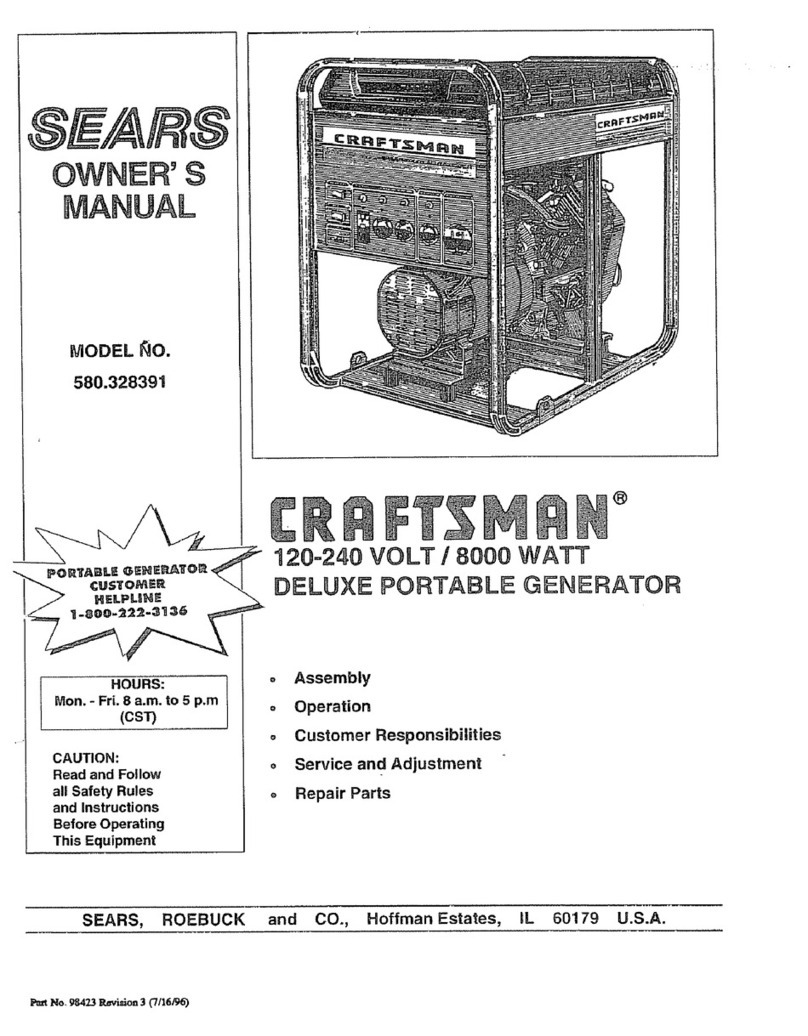
Craftsman
Craftsman 580.328391 owner's manual

Generac Portable Products
Generac Portable Products 006000-0 owner's manual

Briggs & Stratton
Briggs & Stratton CLEANSHOT 2050PSI owner's manual

UVPLUS
UVPLUS UVP701C manual
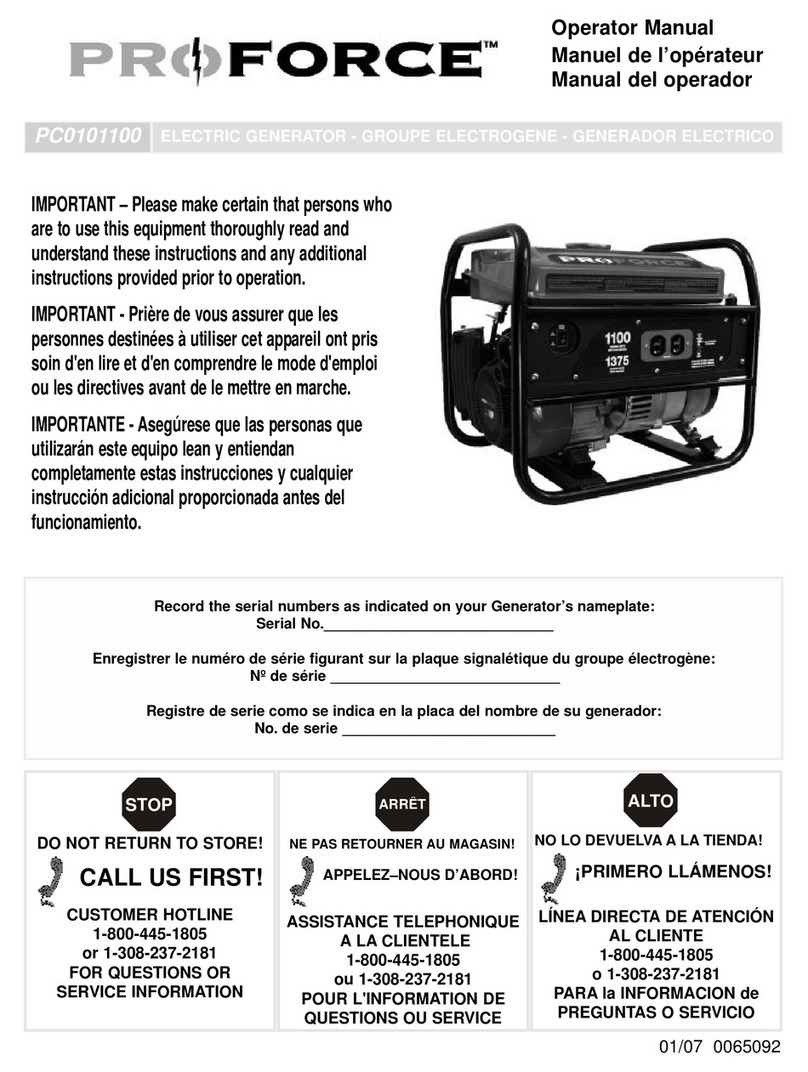
Powermate
Powermate ProForce PC0101100 Operator's manual
